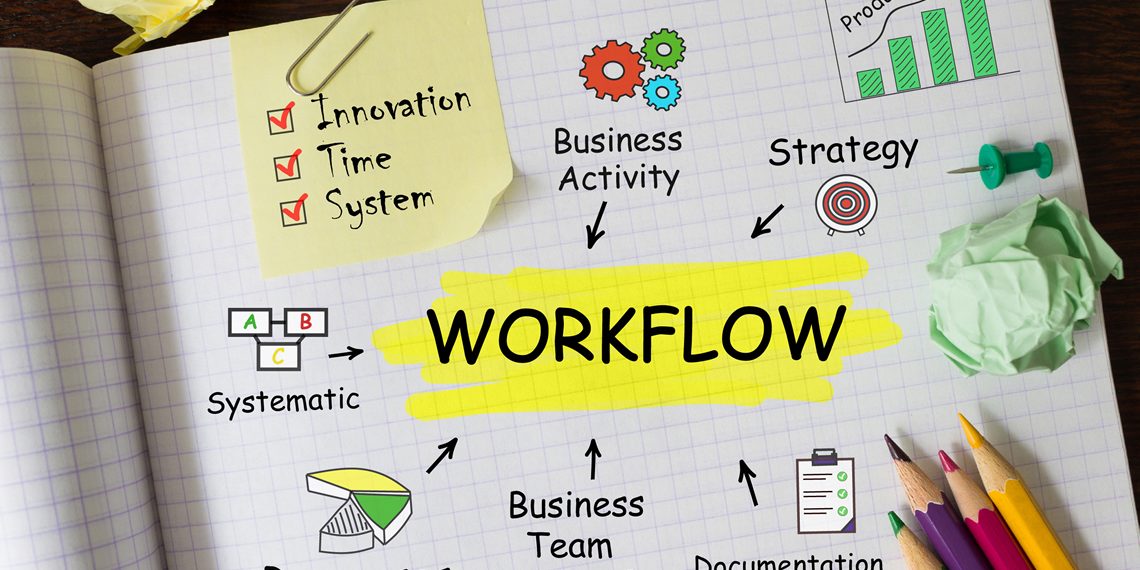How efficient is your business? You can improve your company’s efficiency through the process of optimization and streamlining – getting rid of unnecessary steps and reducing your overall waste. Business processes form the basic building blocks of your company’s infrastructure, and most businesses are going to need to streamline these processes if they want to scale.
Write Down Your Business Processes
Small and medium sized business processes tend to grow organically. A business owner starts with something that works, intending to optimize it later — and then never gets the time necessary. You can begin streamlining your business by writing down your business processes.
- Create flowcharts for complex and important processes, such as product acquisition, or production.
- Draw out the structure of your business, including the Accounts Receivables and Accounts Payable departments, and how they interact.
- Have employees write out their own business processes, including day-to-day operations and scheduled tasks.
Once you have the appropriate documentation ready, you can start the process of optimization.
Ask Your Employees for Their Input
Employees are on the ground. Consequently, they’re often well-suited to give their own opinions on operational efficiency. Many employees will instinctively know the best ways of streamlining their own positions, even if they may not have the big picture. While you may not want to implement all their ideas, collecting their ideas can be extraordinarily valuable.
Invest in New Technology
Technology is often what small and medium-sized businesses use to scale upwards and to compete with larger enterprises. Through technology, a single individual can do the work of multiple individuals, and the business can improve its operations without increasing its overhead.
New technologies to explore include:
- Logistics and shipping solutions.
- Marketing automation and advertising suites.
- Customer relationship management platforms.
- Accounting, budgeting, and forecasting products.
- Communication and collaboration software.
If there are tasks that are taking a long time, such as projecting out future inventory, it’s likely there is a technological solution to complete that task. Modern business suites are extremely advanced and can use your company’s data to make detailed, complex, and accurate decisions.
Consider Outsourcing Tasks
Some tasks are simply too cumbersome to handle in-house. These tasks require specialists. You may be paying too much in work hours for your existing staff to complete these tasks; it may be cheaper to outsource them.
A few things that small businesses often outsource include:
- General bookkeeping and tax preparation. Instead of hiring an internal bookkeeper, a business can hire a company to handle everything for them.
- Payroll services. Even if a business does maintain an internal bookkeeper, payroll is often very difficult. It’s also time-consuming to scale.
- IT services. Most small companies can’t afford to keep IT staff at hand, but they do need their technology up and running. IT services can provide support as well as security.
- Cleaning services. If employees are spending a lot of time cleaning, organizing, and generally maintaining the offices, this is time that they aren’t spending working.
Some companies shy away from outsourcing because they would rather do everything in-house. However, the more that’s done in-house, the harder it is for a business to scale upwards.
Streamline Your Existing Processes
Once your business processes have been appropriately mapped and outsourced, it’s time to begin the process of streamlining. To streamline your business processes, try to identify:
- Additional steps that may not be necessary, such as steps that are duplicated further down in the business process.
- Processes that are being repeated by multiple people, or processes that could be combined into a larger, single process.
- Steps that exist to compensate for some failure in technology, such as trying to transfer data from one system to another.
- Processes that often need to be redone, whether it’s because it was done incorrectly or because it’s inherently inconvenient.
Try to modify all your processes at once. An iterative approach is better. Changing all your business processes at once is more likely to disrupt your business, leading to employees who resent and reject change.
Establish Benchmarks
When optimizing your business, it’s often worth it to learn from other, similar businesses. Look at the common processes within your industry. Industry magazines are an excellent way to learn more, as are business-focused trade magazines.
Businesses and their processes are constantly evolving, and many businesses are eager to show off the improved processes that they have developed. Don’t be afraid of looking into neighbouring industries as well; they may have some interesting ideas that you can apply to your own field.
Streamlining your business is a continual process. At intervals, you’ll need to review your business to ensure that it’s still well-optimized and functioning smoothly. However, a benefit to streamlining is that when there are fewer processes overall, there are also fewer things that can go wrong.

















